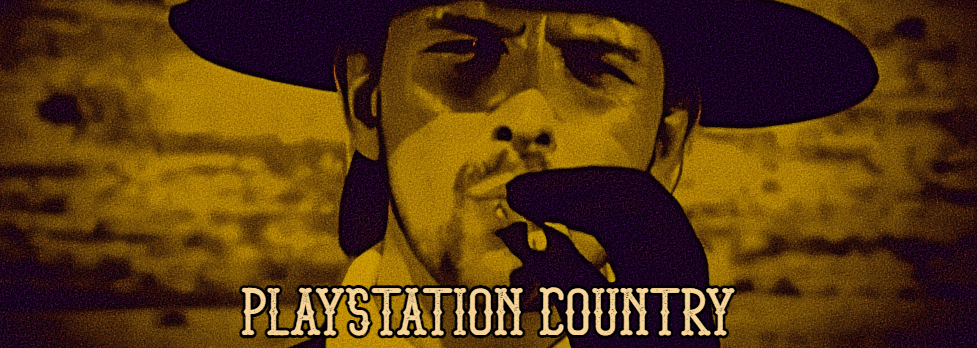Hell is Us feels like a deceptive game. The trailers big up the lack of hand holding and the soulsian combat but neither truly reach their apex. Rogue Factor do make up most of the distance with an approach that makes exploration worthwhile. The central backdrop offers a potentially interesting discussion but a strange lack of commitment undermines it.
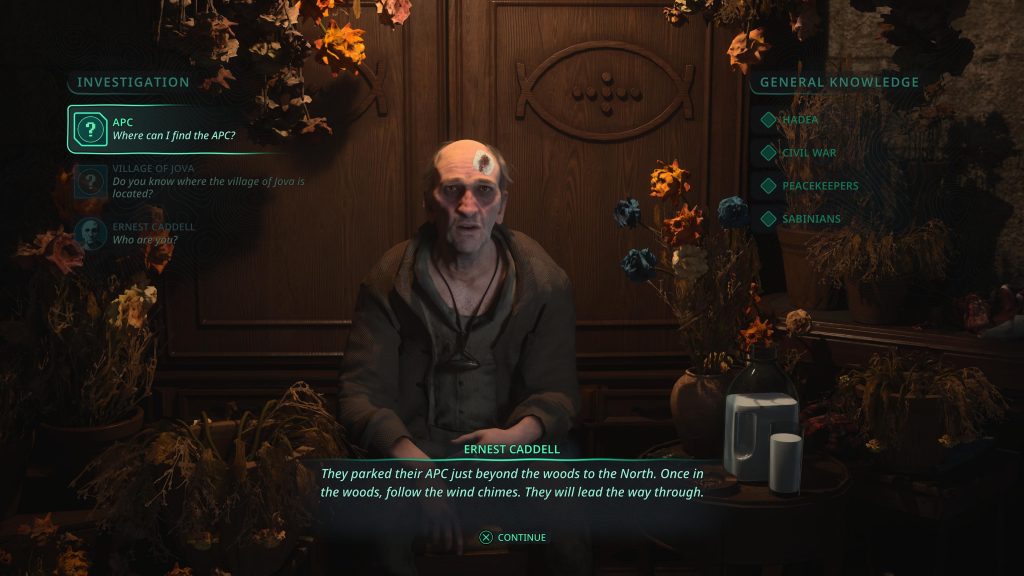 The story takes cues from conflicts like the break up of Yugoslavia. Remi is an ex-military guy on the hunt for his parents. The main thread focuses around this attempt at family reunion but doesn’t stray into the conflict itself. You’ll hear a lot about it from the townsfolk with everyone having an opinion on it. Sadly, Remi picks his way through it being somewhat neutral to a war that has clearly taken its toll. Remi is retelling the tale during an interrogation. It’s a nice conceit that explains away a player’s death in an understandable fashion.
The story takes cues from conflicts like the break up of Yugoslavia. Remi is an ex-military guy on the hunt for his parents. The main thread focuses around this attempt at family reunion but doesn’t stray into the conflict itself. You’ll hear a lot about it from the townsfolk with everyone having an opinion on it. Sadly, Remi picks his way through it being somewhat neutral to a war that has clearly taken its toll. Remi is retelling the tale during an interrogation. It’s a nice conceit that explains away a player’s death in an understandable fashion.
It can be interesting talking to civilians and soldiers and seeing how they view a fight over land and sectarian supremacy. It doesn’t sound like a focused skirmish with race, religion and science all thrown into the pot. The main story really does suffer from feeling separate to the barbarity around him. He is not part of this and I think that’s a missed opportunity. The remnants of war are all around you but the places you visit can feel empty. A NATO equivalent have played peacekeeper and that may be some justification for a lacking military presence.
There’s also an external, otherworldly threat whose mystery is a little fumbled. Again, the main plot doesn’t compel me like the human misery does. For a game with plenty written around the conflict, I don’t feel like it’s digging too deep into the weeds. I may be a bit harsh but I would’ve loved this game to focus entirely around the facets of this sectarian stalemate.
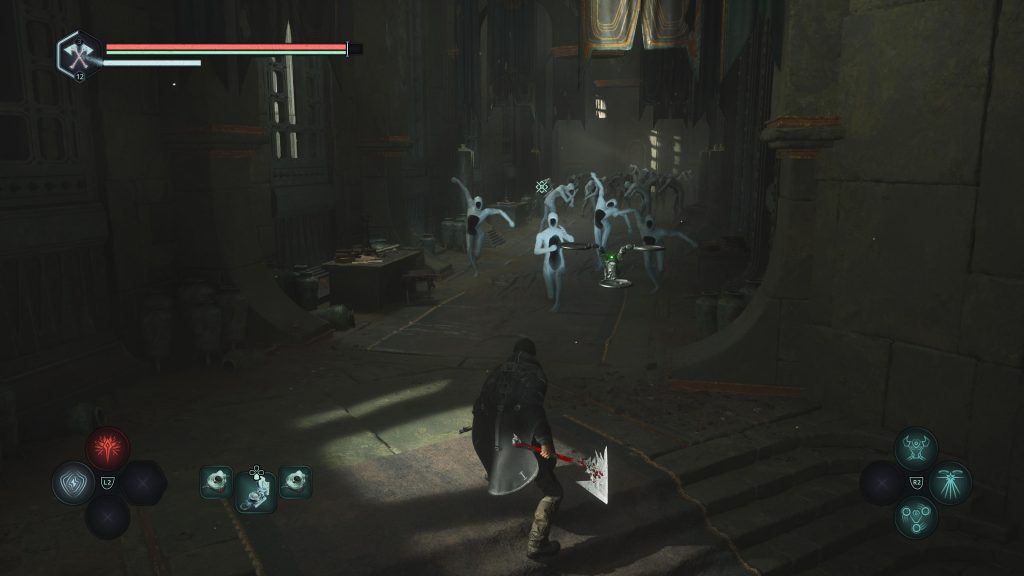 Whilst the marketing evoked the hand holding debate, the execution results in something distinctly directed. This adventure touts a lack of a map and objective marker as a real feature. It does have an impact and places the journey of exploration firmly in the players hands. However, it’s still a guided effort with characters all too happy to explain the lay of the land. With a compass in hand, Remi can orient himself and plenty of the directions you’re given feel explicit.
Whilst the marketing evoked the hand holding debate, the execution results in something distinctly directed. This adventure touts a lack of a map and objective marker as a real feature. It does have an impact and places the journey of exploration firmly in the players hands. However, it’s still a guided effort with characters all too happy to explain the lay of the land. With a compass in hand, Remi can orient himself and plenty of the directions you’re given feel explicit.
It results in something softer than what’s perhaps imagined by a move like this. The reality is, the lack of a map has made for a designed effort that relies on other methods of teaching. I still consider it effective. Despite the open areas, the landmarks are easy to spot. I found myself wandering locations knowing that something would prod me back on track.
I would rarely get lost but some areas can feel labyrinthine. Underground, things can meld together and feel indistinct. There’s a mine area early on that has several entrances and I did have trouble navigating through it. Thankfully, it’s not that common and I feel the locations are designed with directions in mind. Getting side-tracked is rewarding in itself with plenty of good deeds to accomplish. In that sense, the player can influence the lives of others in small but meaningful ways.
The main puzzles follow a similar approach. Solutions are usually explicit with environmental clues or notes available to read. Keeping track of your investigations is done with a tablet which can be consulted at any time. Even here, the information is usually spot on. Whether you’d consider it easy is going to be down to each individual. I liked how seamless it felt and it was mostly just confirming routes I’d already considered.
As an adventure game, Hell is Us gets the big strokes right. As a combat experience, it’s a bland affair. It loosely follows a soulsian blueprint. You’ve got a stamina pool and there’s some deliberateness to strikes. It’s incredibly lenient but it does try to follow those specific rhythms. Difficulty can be tweaked on the fly but I rarely had a problem with it.
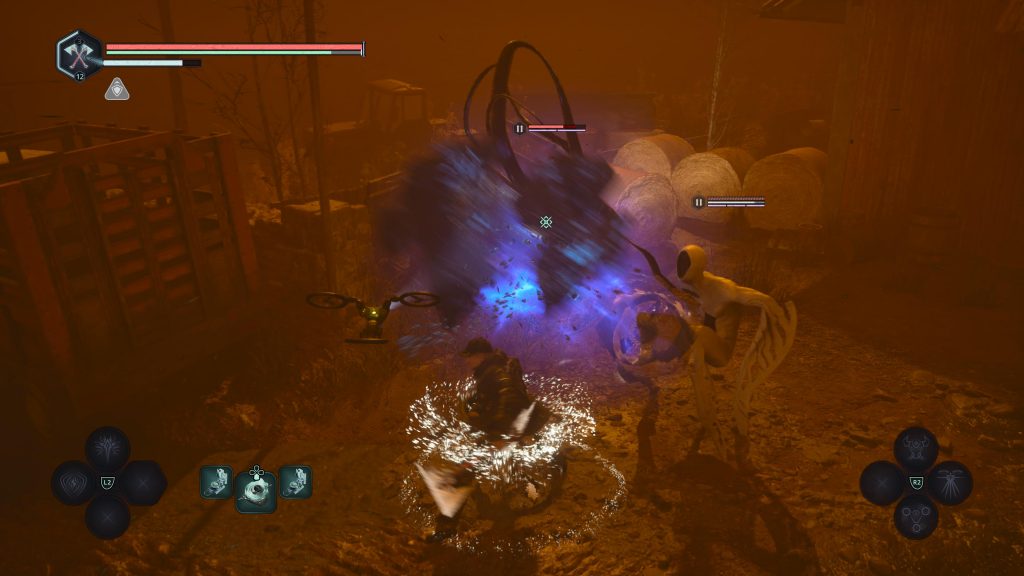 Enemy designs come in a few humanoid varieties that repeat quickly. The only difference seemingly being their health pools and whatever entity they may be tied to. These faceless mannequins have a limited set of moves in combat and can be moved around easily. They will keep you company for the majority of the game with only a couple of boss encounters to really change it up. Even then, these big fights follow a familiar pattern.
Enemy designs come in a few humanoid varieties that repeat quickly. The only difference seemingly being their health pools and whatever entity they may be tied to. These faceless mannequins have a limited set of moves in combat and can be moved around easily. They will keep you company for the majority of the game with only a couple of boss encounters to really change it up. Even then, these big fights follow a familiar pattern.
To make matters even less stressful, Remi can regain health with a timed button press. As you do damage, orbs will surround you and timing R1 will gift the damage you’ve delivered as health. Theoretically, that means careful players may have infinite health to draw upon. In practice, interruptions and mobs make that a little trickier to accomplish.
Problems can arise when you do hit low health. Your available stamina mimics your current health. It’s a bold choice but it does compound perilous situations. Being unable to dodge due that codependency can lead to some unnecessary deaths. Death itself can carry little consequence. Enemies will, for the most part, remain dead once defeated. Some areas are so wide open that conflicts can be skirted around.
It doesn’t feel rewarding with upgrade materials being plentiful. Using weapon types will upgrade them naturally and you can supplement this with consumables. I’ve got no shortage of resources but I was wary of how finite healing items could be. With the regain mechanic, it won’t trouble you but I found the final few scraps to be tedious and chewed through my first aid kits.
The presentation is pretty good. Voice acting is solid across the board with each member of the cast portraying a populous exhausted by their surroundings. Those surroundings do look war-torn but carry the sense of a lived in country. Some towns are recently torched or ransacked. A couple of locations are quiet and seemingly untouched by the machineries of death. It can really feel like the tensions are at arm’s length. Like the conflict itself is a museum piece behind glass.
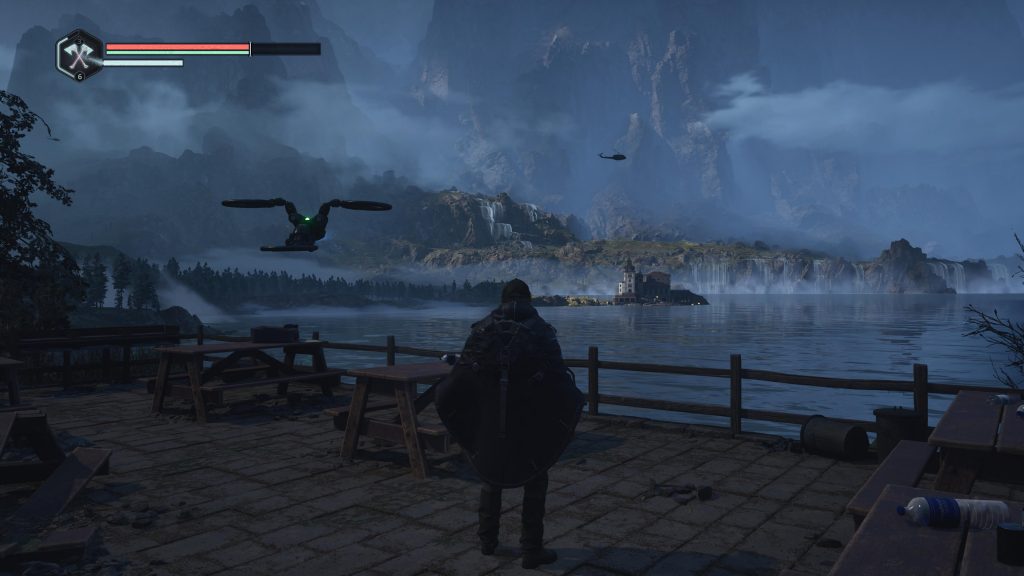 The people you meet are expressive and they’re well-written. It can settle on a dull palette but that fits for the dire situation the game takes place in. I find the music to be excellent. It’s largely filled with ambient works that drone and sprinkle in some sci-fi elements. It really hammers home the abnormal and the quiet of an ongoing lull in hostilities.
The people you meet are expressive and they’re well-written. It can settle on a dull palette but that fits for the dire situation the game takes place in. I find the music to be excellent. It’s largely filled with ambient works that drone and sprinkle in some sci-fi elements. It really hammers home the abnormal and the quiet of an ongoing lull in hostilities.
I do wish Hell is Us committed more to it’s war-ravaged narrative. Remi’s involvement ironically feels like a side-story and the combat rarely carried a threat. The design of the locations lends itself well to the map-less experience. I still had to think but the game was giving me plenty of direction. As an adventure, the journey is enjoyable. As an action game, it underwhelms.
+ The people you meet have compelling stories.
+ Locations are smartly designed.
+ Has a very atmospheric soundtrack.
- Combat can feel very inconsequential.
- Remi's story feels strangely separate to the wider conflict.
- Stamina's co-dependency on health feels like an unnecessary restriction.
